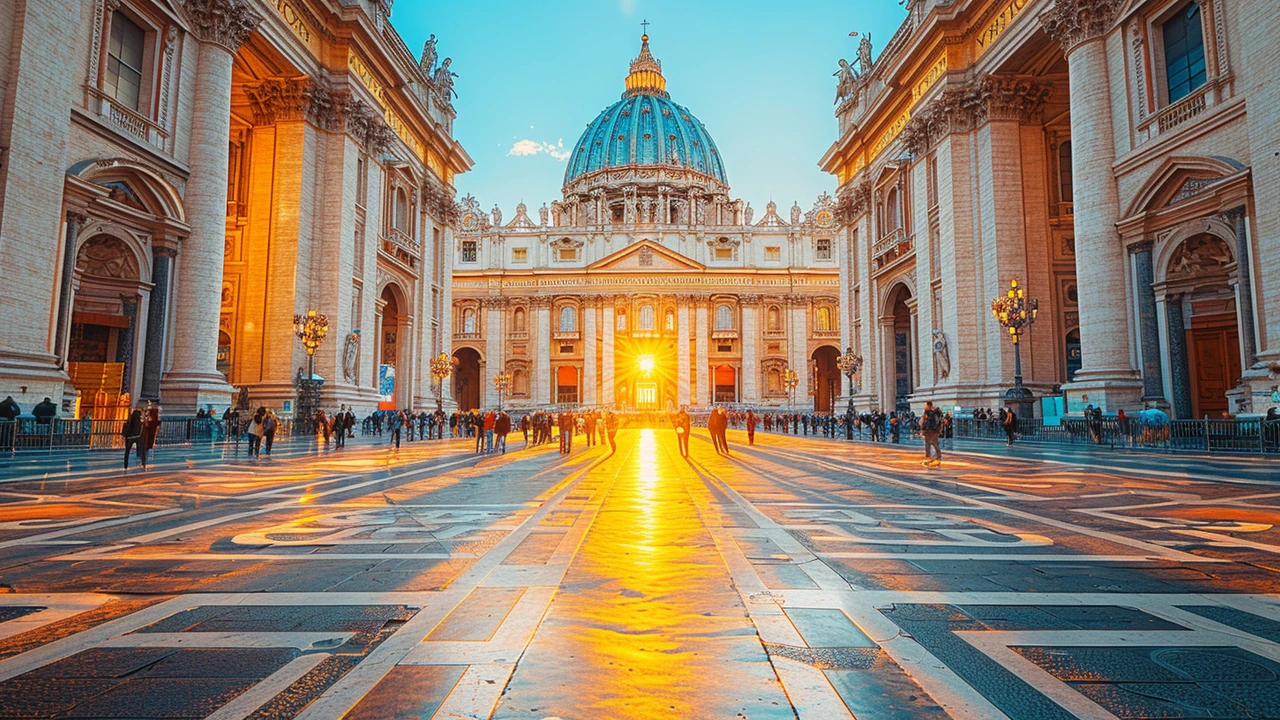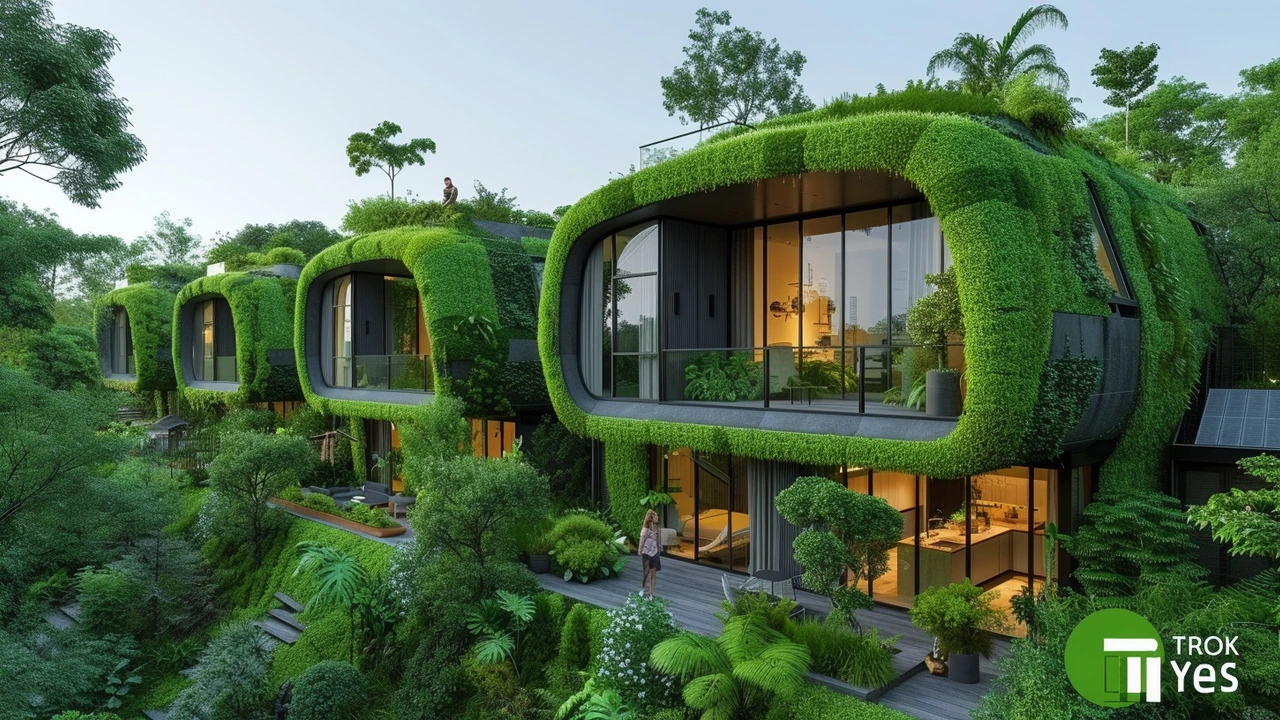February 2024 Archive - Architecture and Design Highlights
What if architecture could be both rebellious and rooted in history? February 2024 on Macklowe Art and Architecture collected pieces that push design boundaries while honoring the past. This month’s posts range from sharp, experimental movements to careful conversations about sustainability and heritage. If you want quick takeaways before reading full pieces, this archive page points you to the main ideas and practical angles.
Modern moves and radical ideas
Two essays focus on movements that reshaped twentieth century design. The Postmodern piece explains how architects rejected modernist uniformity and used color, ornament, and irony to reconnect buildings with culture. It highlights key figures and buildings to watch when you study how meaning returns to facades. The Deconstructivism article looks at the opposite strategy: deliberate fragmentation. You’ll read about pioneers who broke forms to question structure and predict how those experiments still influence bold projects today.
Both posts offer practical tips: when evaluating a building, note whether it aims to communicate through symbolism or to disrupt expectations. That simple checklist helps students, critics, and clients talk about intent, not just style.
Sustainability and the green direction
Three posts cover sustainability from history to future trends. One traces eco-friendly ideas back to older practices that used local materials and passive systems. Another maps current innovations, like energy-efficient systems and green roofs, and explains how they cut costs and carbon. A forward-looking piece outlines design trends—material reuse, integrated vegetation, smarter energy management—that matter if you’re planning any new project today.
These articles give specific steps: audit energy use, prioritize passive design first, and consider proven green tech like rainwater capture. Simple moves often make the biggest difference on budget and impact.
For fans of historical architecture, February offered solid surveys of Georgian, Greek Revival, Federal, and Baroque styles. Each article distills defining features: Georgian order and proportion, Greek Revival columns and civic symbolism, Federal refinement and American identity, and Baroque drama with bold light and ornament. The summaries include preservation notes and examples to visit or study, helping designers borrow details responsibly rather than copy blindly.
Use the month’s collection as a compact curriculum. Start with one movement, read the linked examples, sketch key details, and apply a sustainable principle to your next concept. If you’re teaching, assign one post per week and ask students to compare how form and function respond to culture, technology, and climate.
Want to read everything? Follow the post links below to go deeper into each topic. You’ll find case studies, visuals, and practical takeaways that make the ideas easy to use in real projects. Explore the pieces and pick one insight to try this week.
Share your notes or questions in comments. I write, edit, and curate these posts regularly, so bookmark the archive and check back for new posts and updates that connect design history with current practice and green innovation. Thanks for exploring with Macklowe today

Exploring Postmodern Architecture: A Journey into Artistic Freedom and Innovation
In the realm of architectural evolution, Postmodern Architecture stands out as a defiant movement that broke free from the shackles of modernist principles, championing diversity, complexity, and playful irony. This article dives deep into the essence of Postmodern Architecture, exploring its roots, key characteristics, influential figures, and iconic buildings. It also sheds light on the movement's impact on contemporary design and the ongoing debate surrounding its place in the architectural canon. By providing a comprehensive overview, this narrative aims to celebrate the bold statement of artistic freedom that Postmodern Architecture embodies.
Read more
Exploring Deconstructivism: A Revolution in Modern Architecture
Deconstructivism is not just a style; it's an avant-garde movement that challenges traditional architecture norms, aiming to disrupt the harmony and rigidity of conventional structures. This comprehensive article delves deep into the roots of Deconstructivism, highlighting its pioneers, iconic buildings, and the principles that make it stand out. As someone residing in Perth, Australia, I've seen architecture evolve, yet the radical twists and turns of Deconstructivism offer a refreshing perspective on what buildings can symbolize. We'll explore how this movement redefines spaces, its impact on contemporary architecture, and why it continues to inspire architects worldwide.
Read more
Tracing the Green Path: The Evolution of Sustainable Architecture Over Time
Explore the transformative journey of sustainable architecture from ancient practices to the modern era. This article delves into the origins of eco-friendly design, highlights significant architectural innovations, and discusses the importance of sustainability in today's built environment. Learn about groundbreaking projects that epitomize the principles of sustainability and discover useful tips for incorporating green elements into your own space.
Read more
Exploring Greek Revival Architecture: A Journey Through Time and Style
Greek Revival Architecture celebrates the grandeur of ancient Greek design. This article uncovers the elegance and historical significance of this architectural style. It explores its characteristics, origins, notable examples, and preservation efforts. Discover how Greek Revival is more than just a style; it's an homage to the intellectual achievements of ancient Greece. Whether you're an architecture enthusiast or a curious learner, this journey through Greek Revival architecture promises insightful revelations.
Read more
Exploring the Grandeur of Baroque Architecture: A Comprehensive Guide
Baroque architecture, known for its dramatic use of shapes, light, and rich details, is a style that emerged in the late 16th century in Italy and spread across Europe. This article delves into the origins, key characteristics, and significant examples of Baroque architecture, offering insights into its development and influence over time. Through exploring the grandiosity and complexity of Baroque structures, readers will gain a deeper appreciation for this fascinating architectural style.
Read more
Exploring Federal Architecture: A Showcase of American Design Excellence
Federal architecture stands as a profound exhibit of American history and design principles, embodying an era that significantly shaped the nation's identity. This article delves into the essence of Federal architecture, tracing its origins, key characteristics, and lasting influence on modern building design. It highlights the architectural mastery of the Federal period, exploring the underlying symbolism, and the enduring appeal of its structures. Through examining iconic examples and offering insights into preserving these historic edifices, the article serves as a comprehensive guide to understanding and appreciating the grandeur and sophistication of Federal architecture.
Read more
Revolutionizing Our World: The Future of Sustainable Architecture and Innovative Design Trends
Diving into the realm of sustainable architecture reveals an ever-evolving landscape of innovative design trends and practices aiming to redefine our built environment. This exploration sheds light on the crucial role sustainability plays in architecture, from the integration of eco-friendly materials and the implementation of energy-efficient systems to the promotion of green spaces in urban contexts. These transformative trends not only pave the way for more sustainable living conditions but also promise to significantly reduce the carbon footprint of buildings, underscoring the vital importance of embracing sustainable architectural practices for a greener future.
Read more
Exploring Georgian Architecture's Impact on Urban Landscape Design
Georgian architecture has played a significant role in shaping the urban landscapes of cities around the world. This article delves into the history of Georgian architecture, its defining characteristics and how it has influenced modern urban landscaping. Readers will gain insights into the elegance and functionality of Georgian design elements, and how these have been adapted in contemporary city planning. The article also highlights the importance of preserving Georgian architectural heritage in urban environments.
Read more